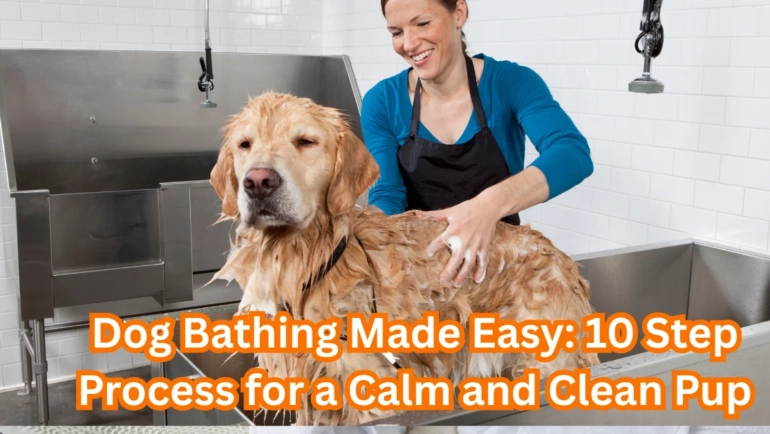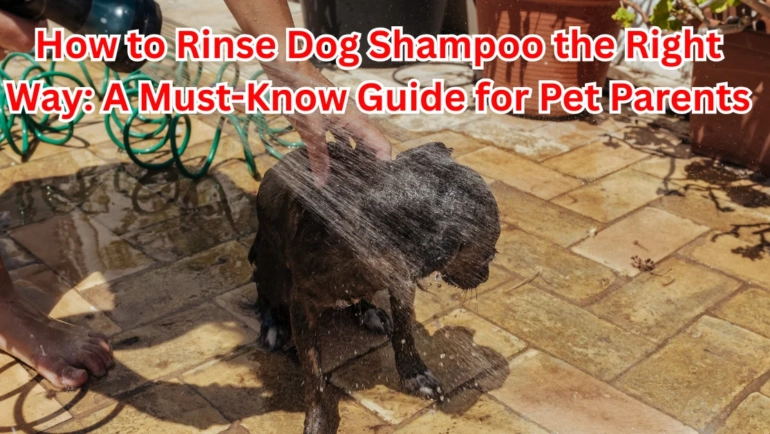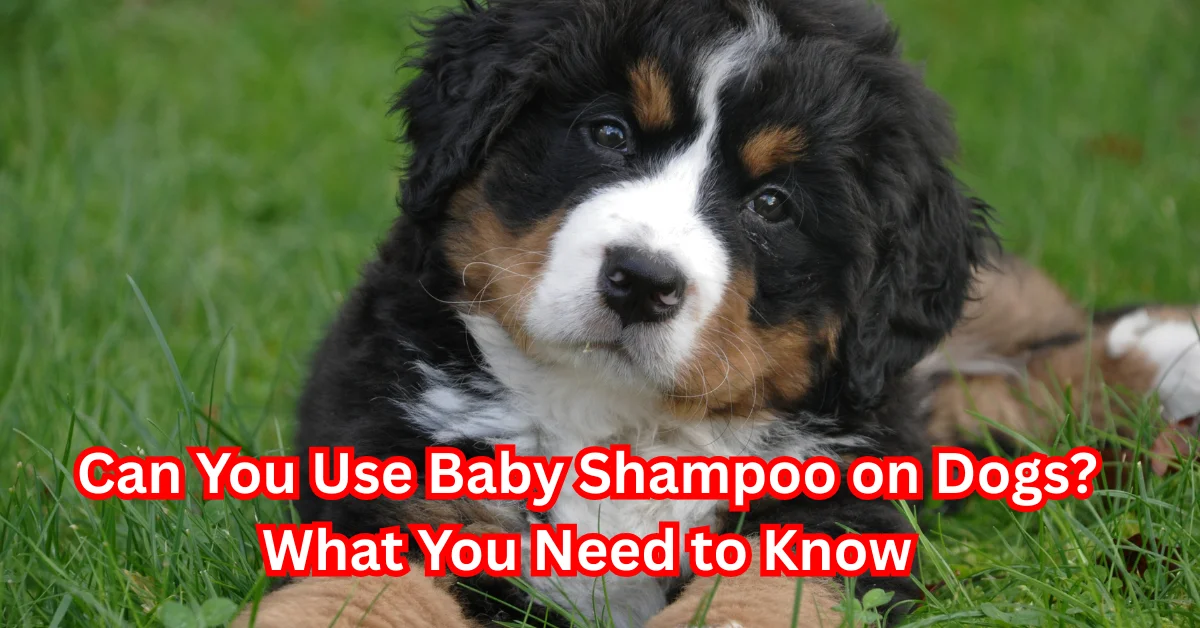
Can You Use Baby Shampoo on Dogs? What You Need to Know
You have shampoo in one hand and worry in the other. Do you ever stand in the shower with your dog, wondering if that bottle of baby shampoo is safe to use? You’re not by yourself. I remember the very first time I bathed Rumi, my very sweet stray dog with very soft eyes and skin. I thought to myself, “If it’s gentle enough for babies, it should be fine for her too.” Later, though, I saw that she was scratching more than normal, and I knew I had been wrong. The truth is that dogs’ skin is very different from ours.
We’ll find out whether baby shampoo is really safe for dogs, explore better options, and help you avoid making the same mistake I did. Our dogs deserve the kindest care possible.
Is Baby Shampoo Safe for Dogs?
No, baby shampoo is not the best choice for dogs. It might look soft and safe, especially if you want to avoid anything harsh. I remember that one morning I didn’t have any more Rumi perfume. My sweet girl, Rumi, with soft brown hair and sensitive skin, needed a bath. I took a look at the kids’ shampoo bottle in the cabinet. It said “safe for babies,” “gentle,” and “hypoallergenic.” I thought it wouldn’t hurt to use it once, so I did.
Things looked good at first. But after a few hours, I noticed Rumi was scratching more than usual. She looked like she was in pain. That’s when I realized that even the mildest shampoo for people can make a dog’s skin feel off.
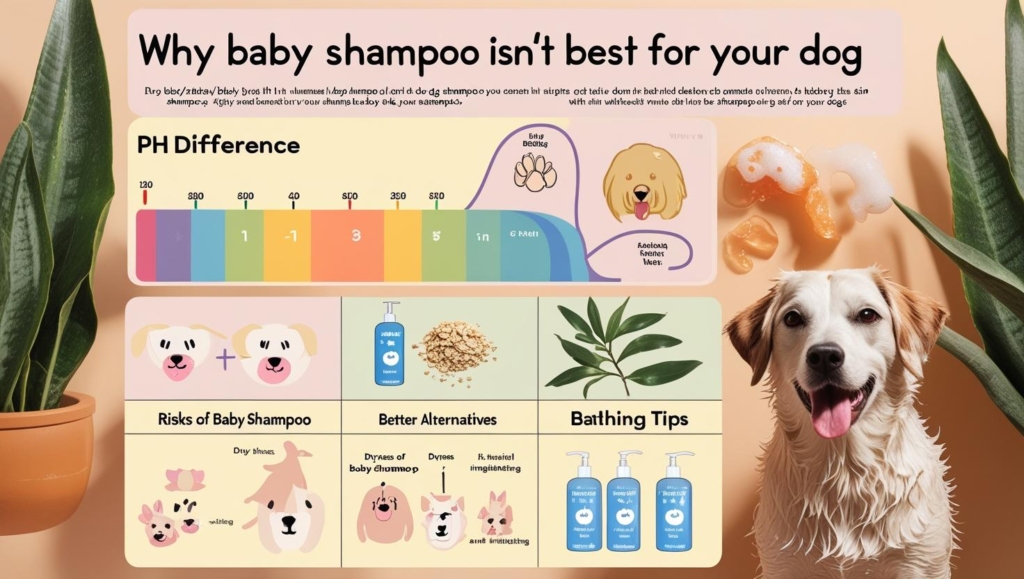
Why Baby Shampoo Isn’t Made for Dogs
Dogs should not use baby shampoo on their fur babies. It contains mild chemicals that gently clean and are less likely to make your eyes itch. Most of them are pH-balanced for skin that is more acidic than dog skin.
Dogs’ skin is more alkaline. If they use a product that isn’t right for their natural pH, it can strip their skin of vital oils. This could make your skin dry, itchy, and irritated.
Ruki’s skin is already pretty sensitive. At the time, baby shampoo seemed like the better choice, but her skin told me it wasn’t. It was very hard for me to learn that “soft” doesn’t always mean “safe.”
What Baby Shampoo Can and Can’t Do
Yes, baby shampoo is safe for use. It probably won’t hurt your dog if she licks a little off her fur. Oh, that’s good to hear. But it’s also not made for the problems dogs have. Things like fleas, ticks, and that smelly dog smell that we all know all too well won’t go away with baby shampoo.
For Rumi, a clean coat wasn’t enough. She needed something that would keep her coat healthy, calm her skin, and keep bugs away. Shampoo for babies didn’t work.
Pros and Cons of Using Baby Shampoo on Dogs
| Pros | Cons |
| Gentle on skin | Disrupts dog’s natural pH |
| Non-toxic if licked | Can cause dryness and irritation |
| Mild scent | Doesn’t treat fleas or ticks |
| Easy to find at home | Not made for dog skin or coat needs |
Can You Use Cat Shampoo for Dogs?
Unfortunately, dog shampoo is not safe for cats. It can still hurt you even if it seems soft. This is something I learned with my sweet stray dog Rumi. During our walk one weekend, she rolled in something gross. I didn’t want to go to the store because I was out of dog shampoo. I saw a bottle of cat shampoo in the closet from when my sister and her cat stayed with us. It said “gentle” and “for sensitive skin” on the package. It seemed safe enough. I used it.
Rumi didn’t seem worried while she was bathing. After that, her coat looked shiny. The next morning, though, I saw that she was scratching a lot, more than normal. She has fur on her head, stomach, and even under her front legs. Her skin looked a little red, and she seemed to be in pain. I knew something wasn’t right at that point.
Cat shampoo is not safe for dogs, even if it seems like it wouldn’t hurt them. This is why.
Dogs and Cats Have Different Skin Needs
Cats and dogs both have fur, but their skin is different. Cats’ skin is smaller and more delicate. Their shampoos are perfect for people with sensitive skin. They use very mild cleansers and avoid many common ingredients found in dog products.
On the other hand, dogs’ skin is a little tougher. Also, if your dog is busy like Rumi, they tend to get dirtier. Bathing your dog with shampoo will clean them better and keep their natural oils on, without removing them entirely.
I used cat shampoo on Rumi, but it didn’t remove the oil and dirt as her regular shampoo does. It was just sitting on her coat, and the next day it made her feel itchy. Her skin didn’t feel clean; it was red and itchy.
Hidden Risks Inside Cat Shampoo
Some cat shampoos contain ingredients that are safe for felines but dangerous for dogs. Essential oils like tea tree, citrus, or peppermint may smell nice and work well for cats. But those same oils can trigger allergic reactions in dogs or even be toxic in larger amounts.
When Rumi began scratching, I remembered which shampoo I had used. It contained lavender and lemon oil, which I later learned could make dogs’ skin itch. I felt awful. I thought the choice I was making was safe, but it put her in danger.
Even if your dog seems fine after just one use, giving them the wrong ingredients repeatedly can make them sick over time. That’s why it’s important to use the right product from the start.
Better Options for Your Dog
After that bath, I stopped guessing and got a proper dog shampoo. I looked for one labelled hypoallergenic and made for sensitive skin. I also made sure it had no artificial fragrances or essential oils.
Rumi’s next bath went much better. Her skin stayed calm, her coat looked clean, and there was no scratching afterwards. She actually seemed to enjoy the tub, which was rare for her.
That small switch made a big difference. And now I know, I’ll never grab cat shampoo again, even in a pinch.
What Are the Risks of Using Baby Shampoo on Dogs?
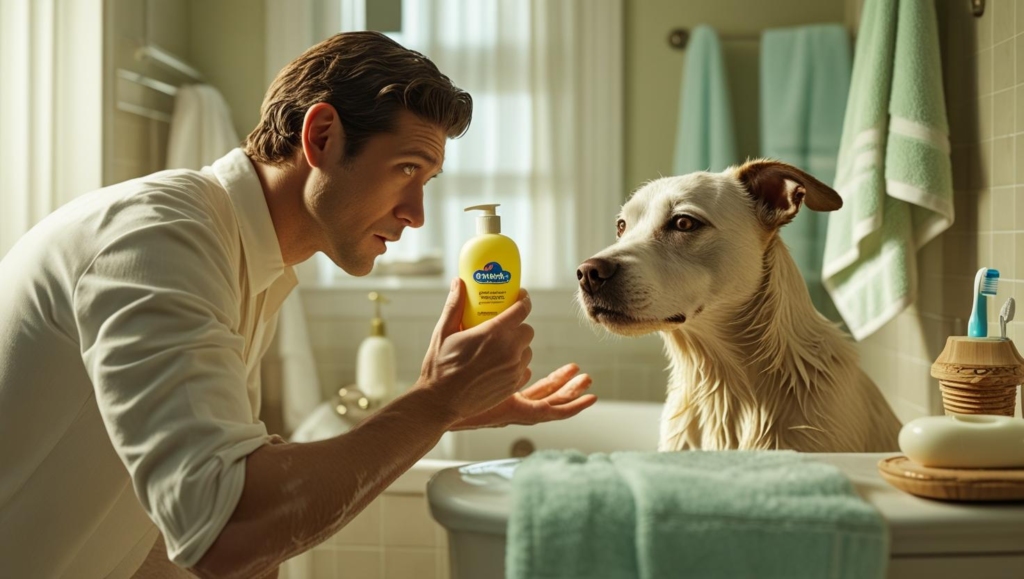
Dogs can get skin problems if you use baby shampoo on them. It might look like a gentle option, but it’s not made for dog skin. The different pH levels are the main problem. Human skin is more acidic than baby skin, so baby shampoo is also more acidic. Dogs’ skin is more acidic. This mismatch can cause soreness, dryness, and long-lasting pain.
This is what I learned after using baby shampoo on Rumi one time. Late at night, they made up their minds. I didn’t have any of her regular shampoo left. “If it’s soft enough for a baby, it must be okay for Rumi,” I thought. She didn’t seem to mind the bath at first, but her skin changed after a day or two. The cat scratched her chest and licked its paws more than normal. I knew something wasn’t right at that point.
How pH Imbalance Affects Your Dog’s Skin
Dogs’ skin is naturally more acidic than people’s skin. The pH level of baby shampoo is based on how acidic baby skin is, not how alkaline dog skin is.
If you wash your dog with something too acidic, it changes the balance of their skin. It gets easier for moisture and irritants to get through that layer. This makes it possible for the skin to itch, flake, and even get illnesses.
That’s precisely what took place with Rumi. Her belly usually feels soft and smooth, but it has become rough and a little red. I could tell she was not happy. She tried to rub herself on the couch over and over. I had to use a soothing balm approved by the vet just to make her skin feel better. After almost a week, she quit itching for good.
Loss of Natural Oils and Increased Dryness
Dogs rely on natural oils in their skin to stay healthy. These oils keep the skin moist and the hair safe. The skin gets dry when you use a shampoo that strips away these oils.
Baby shampoo is designed to clean gently, but it’s not meant to maintain a dog’s skin’s oil balance.
I saw that Rumi’s coat didn’t shine like it usually did after using it on her. It felt rough even though it looked clean. She was licking her legs constantly, which is not something she normally does. I see now that her skin was just too dry. It needed more than just a good cleaning.
Too much washing or using the wrong shampoo too often can even cause your skin to get hot spots or long-term problems. The risk is not worth it.
A Gentle Look Isn’t Always a Gentle Result
I’ll be honest: the baby shampoo bottle lied to me. On the label, it said “tear-free” and other things like “hypoallergenic,” which made it look like a safe choice.
But sometimes what works for kids doesn’t work for our dogs. Their skin types, wants, and sensitivities differ.
Rumi needed shampoo made just for dogs. Something that didn’t strip her skin of its natural oils and kept her coat in good shape without making her feel stressed. It was clear that things had changed once I made that move. The itching is over. Her fur felt soft again. She looked even calmer while taking a bath.
What Are the Best Alternatives to Baby Shampoo for Dogs?
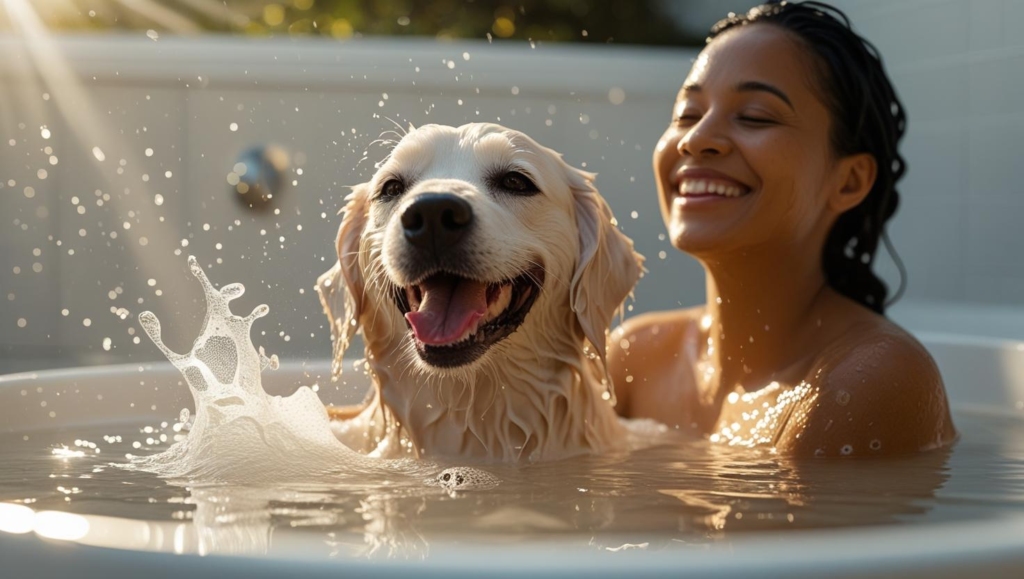
A gentle shampoo made just for dogs is the best option instead of baby shampoo. Washing your dog with shampoo is special because each dog has different skin. They clean without making you feel bad. They keep your dog’s natural oils safe and make him feel better after every bath. If you use the right shampoo, you can keep your skin from drying out, itching, and even becoming infected.
Since baby shampoo didn’t work so well for Rumi, I knew I had to find something better. She needed something that would calm her down and clean her well while being gentle on her skin. I looked into it and bought an oatmeal dog shampoo that my vet suggested. It said it was safe and didn’t have any soap in it. At first, I wasn’t sure, but after just one wash, I could tell the difference.
Her coat looked shinier. Her skin wasn’t dry. And best of all, there was no more scratching.
Why Dog-Specific Shampoos Work Better
Dog shampoos are formulated to maintain a dog’s skin pH. They clean deeper but gently. They don’t strip away essential oils like baby shampoo can.
Rumi’s new shampoo contained aloe vera and rice. People know that both of these ingredients can help ease irritation and keep skin moist. This time, I felt better about myself after reading the sticker. Not any harsh agents. There should be no fake scent. Just clean, easy things that are good for dogs.
After bathing Rumi, I can tell she is calmer. Like she used to, she doesn’t try to avoid the bathroom. Now both of us can enjoy bath time more.
Natural Alternatives That Are Safe and Soothing
There are natural things that can help if your dog has sensitive skin, as Rumi did. Soaps made with oatmeal, aloe vera, or coconut oil can help soothe dry or itchy skin. These ingredients are gentle and help keep the skin’s layer in place.
I used oatmeal shampoo on Rumi, and it smelled clean but not too strong. It was easy to lather up and quick to rinse off. It was soft for days on end. I didn’t have to worry about chemicals or responses that were hiding.
Also, aloe vera is great. It makes the face feel cooler and less red. When Rumi’s belly gets itchy in between baths, I sometimes put a little pure aloe gel on it.
How to Safely Bathe Your Dog Without Baby Shampoo
It doesn’t have to be upsetting to bathe your dog. A simple setup and the right shampoo can make a big difference.
I always get everything I need together before I take a bath. I have shampoo for Rumi, a soft towel, a jug for water, and of course, her favorite treat. I get a small bucket of warm water and soak her coat gently in it. I rub a little shampoo into her hair with my hands. To be safe, I stay away from her eyes, ears, and nose.
It is very important to rinse. I always wash out all of the shampoo. Then I dry her gently with a towel and put her somewhere warm in the house to air dry. I use a blow dryer on low heat and hold it far away when it’s cold.
Rumi really loves the treat after a bath. It’s become a habit for us now. She waits by the treat jar, as if she knows she deserves it.
How to Choose the Right Shampoo for Your Dog
Each dog is unique. Some need moisture. Some people need help with allergies, acne, or hair loss. For Rumi, it was important to be wet. In the winter, her skin dries out very quickly. I stay away from products that contain sulfates or synthetic scents. Before I wash her whole head, I also test new shampoos on a small area of skin.
To get the best advice, talk to your vet if your dog has skin problems or allergies. That’s how I found the oatmeal recipe that Rumi really liked.
Can You Use Dog Shampoo on Cats?
No, you should never use dog shampoo on cats. I don’t have a cat myself, but my sister’s cat, Max, visited once. She accidentally used Rumi’s shampoo on him. Within a few hours, Max started licking excessively and seemed agitated. Turns out the dog shampoo had essential oils that are totally unsafe for cats.
Cats have thinner, more sensitive skin than dogs. Their bodies also process ingredients differently. Some essential oils or flea treatments in dog shampoos can be toxic to them. If you have a cat, always choose a product made just for felines. It’s not worth the risk.
My Final Thoughts
When you care for your dog, you should only use things that are good for their health, even when you bathe them. It might seem like a good idea to use baby shampoo instead, but it’s not right for your dog’s skin. You now know that using the wrong product can make your dog’s skin dry, itchy, and uncomfortable, and that a shampoo made just for dogs is always the better choice.. Our pups rely on us to keep them comfortable, clean, and happy and that starts with the little things. If you haven’t already, take a moment to check your dog’s shampoo and see if it’s really the right fit. Rumi and I learned this lesson together, and now bath time is something we both look forward to. Your dog deserves that same comfort, too.
FAQ About Can You Use Baby Shampoo on Dogs
1. Can I use baby shampoo on my dog in an emergency?
Yes, in a one-time emergency, it’s usually okay, but it shouldn’t be a regular solution. Switch back to dog shampoo as soon as possible.
2. What if my dog accidentally licks baby shampoo during a bath?
Most baby shampoos are non-toxic in small amounts. Rinse your dog’s mouth with clean water and monitor for any signs of irritation.
3. How often should I bathe my dog with sensitive skin?
Once every 4 to 6 weeks is ideal for sensitive skin, unless your vet advises otherwise. Overbathing can cause dryness.
4. Can I mix baby shampoo with dog shampoo to make it milder?
No. Mixing can alter the pH and effectiveness. It’s safer to use a properly formulated dog shampoo for sensitive skin.
5. Are there any homemade dog shampoo options?
Yes. A mix of oatmeal, baking soda, and water can be a gentle DIY alternative, but check with your vet before using.
6. Can baby shampoo cause allergic reactions in dogs?
Yes, some ingredients or fragrances may trigger allergies, even if the shampoo is labelledWhat You Should Know Before Bathing Your Puppy In 2025The Ultimate Dog Shampoo Guide: Ingredients, Testing, Bath & Coat CareHow to Bathe a Dog: 10 Easy Ways to Make Bath Time Easier as gentle or hypoallergenic.
7. What are signs my dog is reacting badly to a shampoo?
Watch for redness, scratching, dry patches, or excessive licking within 24 hours after a bath.
8. Is “tear-free” baby shampoo safe for a dog’s eyes?
No. Even tear-free formulas are not made for dogs’ eye chemistry. Always avoid getting shampoo in or near the eyes.
9. Can I use baby shampoo on puppies?
It’s better to use a puppy-specific shampoo. Their skin is very delicate, and baby shampoo still may not match their pH.
10. Do dog shampoos expire?
Yes. Most expire within 12–18 months after opening. Expired shampoo can lose effectiveness or cause skin issues.


